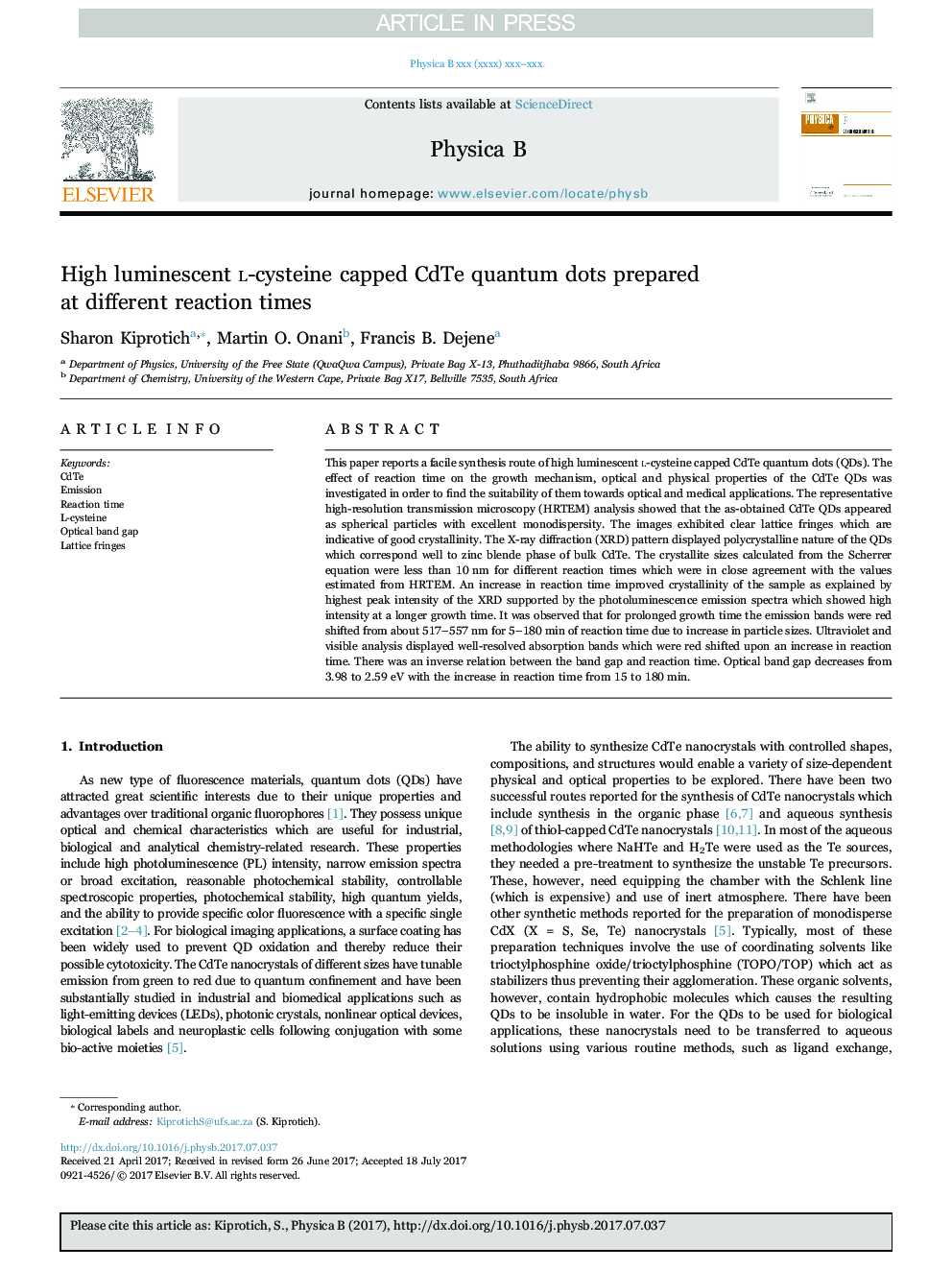| Article ID | Journal | Published Year | Pages | File Type |
|---|---|---|---|---|
| 8161184 | Physica B: Condensed Matter | 2018 | 9 Pages |
Abstract
This paper reports a facile synthesis route of high luminescent L-cysteine capped CdTe quantum dots (QDs). The effect of reaction time on the growth mechanism, optical and physical properties of the CdTe QDs was investigated in order to find the suitability of them towards optical and medical applications. The representative high-resolution transmission microscopy (HRTEM) analysis showed that the as-obtained CdTe QDs appeared as spherical particles with excellent monodispersity. The images exhibited clear lattice fringes which are indicative of good crystallinity. The X-ray diffraction (XRD) pattern displayed polycrystalline nature of the QDs which correspond well to zinc blende phase of bulk CdTe. The crystallite sizes calculated from the Scherrer equation were less than 10Â nm for different reaction times which were in close agreement with the values estimated from HRTEM. An increase in reaction time improved crystallinity of the sample as explained by highest peak intensity of the XRD supported by the photoluminescence emission spectra which showed high intensity at a longer growth time. It was observed that for prolonged growth time the emission bands were red shifted from about 517-557Â nm for 5-180Â min of reaction time due to increase in particle sizes. Ultraviolet and visible analysis displayed well-resolved absorption bands which were red shifted upon an increase in reaction time. There was an inverse relation between the band gap and reaction time. Optical band gap decreases from 3.98 to 2.59Â eV with the increase in reaction time from 15 to 180Â min.
Related Topics
Physical Sciences and Engineering
Physics and Astronomy
Condensed Matter Physics
Authors
Sharon Kiprotich, Martin O. Onani, Francis B. Dejene,
